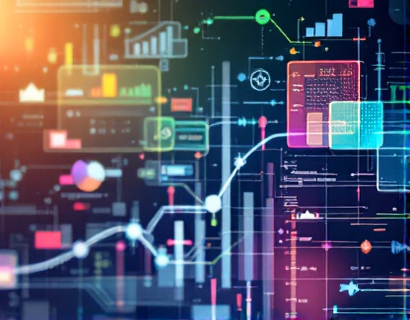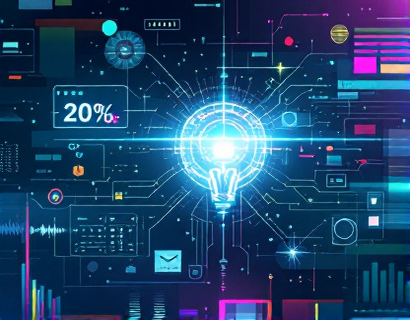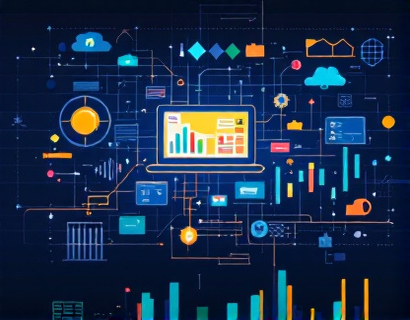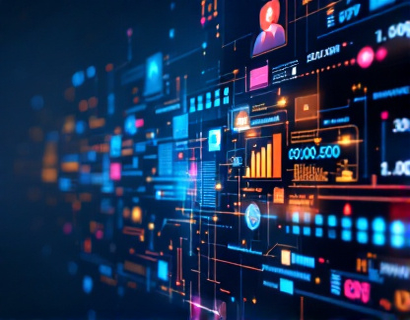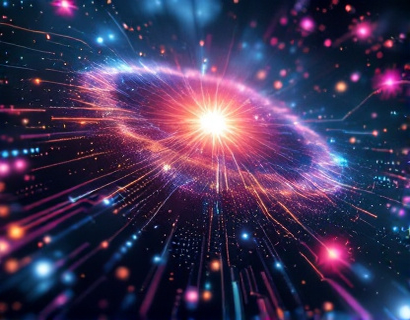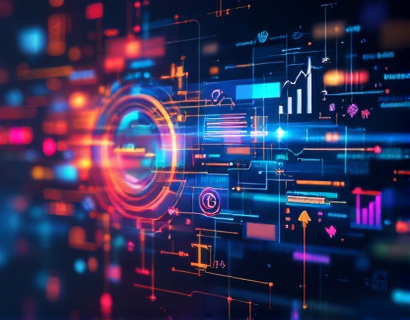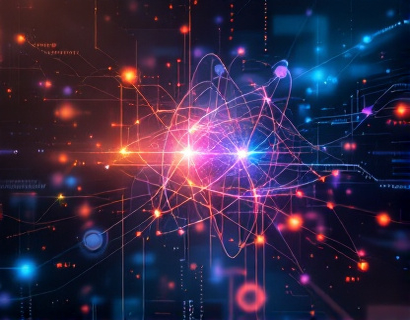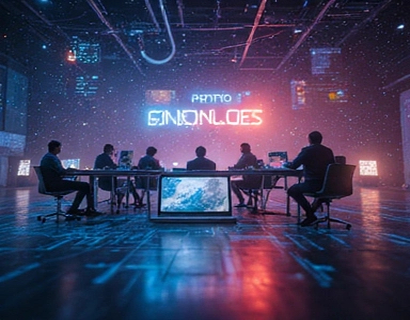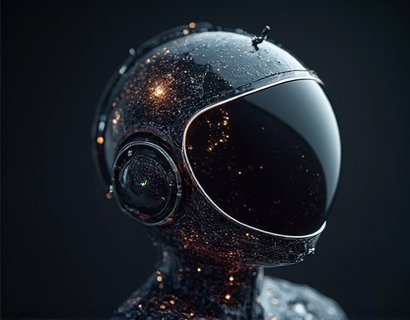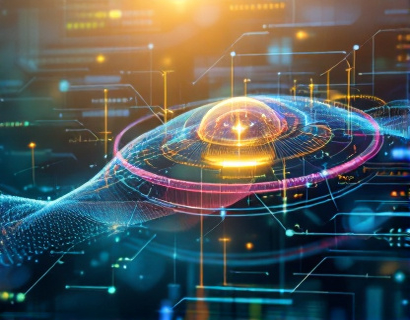Unlocking Next-Gen Productivity with AI and Crypto: A Synergistic Approach
The integration of Artificial Intelligence (AI) and cryptocurrency is paving the way for a new era of productivity and efficiency. This synergy is not just a technological curiosity but a practical solution that can revolutionize how we manage workflows, handle tasks, and interact with digital services. For tech-savvy professionals and early adopters, this combination offers a glimpse into a smarter, more efficient digital future. This article delves into the advanced solutions that harness the power of AI and cryptocurrency to transform the way we work and live.
Understanding the Intersection of AI and Cryptocurrency
The convergence of AI and cryptocurrency is rooted in the shared foundation of blockchain technology. Blockchain provides a decentralized, secure, and transparent ledger that is ideal for both AI operations and cryptocurrency transactions. AI, with its ability to process vast amounts of data and learn from patterns, can significantly enhance the functionality and security of blockchain-based systems. Conversely, cryptocurrency offers a new paradigm for incentivizing AI-driven tasks and ensuring the economic viability of decentralized applications.
Enhanced Workflow Management
One of the most immediate benefits of combining AI and cryptocurrency is in workflow management. AI-driven tools can automate repetitive tasks, optimize schedules, and predict potential bottlenecks. For instance, AI algorithms can analyze historical data to forecast project timelines and resource requirements, ensuring that tasks are assigned efficiently. Cryptocurrency can be used to reward contributors and incentivize performance, creating a dynamic and responsive workflow system.
Consider a scenario where a team of developers is working on a complex software project. An AI system can monitor the progress, identify which team members are handling which tasks, and adjust the workload dynamically based on performance metrics. Transactions for task completion or bonus incentives can be seamlessly handled using cryptocurrency, eliminating the need for intermediaries and reducing transaction costs.
Decentralized Task Management Platforms
Decentralized task management platforms are a prime example of how AI and cryptocurrency can collaborate to enhance productivity. These platforms use blockchain to create a transparent and tamper-proof environment where tasks are assigned, tracked, and rewarded. AI algorithms can further optimize the task allocation process by considering factors such as skill levels, availability, and past performance.
For example, a decentralized platform might use AI to analyze the skills and availability of freelance developers and match them with suitable projects. The platform can issue smart contracts that automatically pay developers in cryptocurrency upon completion of tasks, ensuring fair compensation and reducing administrative overhead. This setup not only streamlines the workflow but also builds trust and accountability among participants.
Smart Contracts for Automated Processes
Smart contracts, self-executing contracts with the terms directly written into code, play a crucial role in the AI-cryptocurrency ecosystem. They can automate a wide range of processes, from payment settlements to data verification. AI can enhance smart contracts by providing predictive analytics and dynamic adjustments based on real-time data.
Imagine a supply chain management system where AI monitors inventory levels, demand forecasts, and supplier reliability. Smart contracts can then automatically trigger purchases, payments, and notifications based on the AI's recommendations. If a supplier fails to meet quality standards, the AI can adjust the smart contract to exclude that supplier from future orders and allocate tasks to more reliable sources. This level of automation and adaptability significantly improves efficiency and reduces human error.
Data Security and Privacy
Data security and privacy are paramount in the digital age, and the combination of AI and cryptocurrency offers robust solutions. Blockchain's inherent security features, combined with AI's advanced encryption and anomaly detection capabilities, create a powerful defense against cyber threats. AI can continuously monitor blockchain networks for suspicious activities and potential vulnerabilities, ensuring that sensitive data remains protected.
Cryptocurrency wallets and transactions can also benefit from AI-driven security measures. AI can analyze user behavior patterns to detect and prevent unauthorized access or fraudulent activities. For instance, if an unusual transaction pattern is detected, the AI can flag the activity and prompt additional verification steps, enhancing the overall security of the system.
Incentivization and Tokenomics
Incentivization is a critical aspect of any collaborative system, and the integration of AI and cryptocurrency provides innovative ways to motivate participants. Tokenomics, the study and design of token-based economies, can be optimized using AI to create more effective and fair incentive structures. AI can analyze user behavior, market trends, and economic indicators to adjust token distributions and reward mechanisms dynamically.
For example, in a decentralized content creation platform, AI can assess the quality and engagement of content produced by users. Based on these assessments, the AI can allocate tokens to creators, ensuring that high-quality content is rewarded appropriately. This not only encourages better content creation but also maintains the integrity and value of the platform's token.
Predictive Maintenance and IoT Integration
In the realm of Internet of Things (IoT), AI and cryptocurrency can work together to enable predictive maintenance and optimize device performance. IoT devices generate vast amounts of data that AI can analyze to predict failures and schedule maintenance proactively. Cryptocurrency can be used to reward device manufacturers and maintenance providers for their contributions to the network.
Consider a smart city infrastructure where IoT sensors monitor traffic flow, energy usage, and environmental conditions. An AI system can process this data to predict when a traffic light needs maintenance or when an energy grid is likely to face issues. Smart contracts can then facilitate payments to the relevant service providers, ensuring timely maintenance and minimizing disruptions. This seamless integration of AI and cryptocurrency enhances the reliability and efficiency of IoT networks.
Education and Skill Development
The synergy of AI and cryptocurrency also extends to education and skill development. Online learning platforms can leverage AI to personalize learning experiences and use cryptocurrency to create decentralized education ecosystems. AI can analyze a learner's progress and recommend tailored courses and resources, while cryptocurrency can be used to reward instructors and incentivize course completion.
For instance, a decentralized education platform might use AI to create adaptive learning paths for students based on their strengths and weaknesses. Students can earn tokens for completing courses and contributing to the community, which can be used to access premium content or purchase tools from other users. This creates a self-sustaining ecosystem where knowledge and skills are continuously enhanced and rewarded.
Challenges and Considerations
While the potential benefits are significant, there are also challenges to consider when integrating AI and cryptocurrency. Regulatory compliance is a major concern, as both AI and cryptocurrency are still evolving fields with varying legal frameworks. Ensuring that these technologies comply with local and international regulations is essential to avoid legal pitfalls.
Another challenge is the technical complexity involved in building and maintaining AI-cryptocurrency systems. Developers need to have a deep understanding of both AI algorithms and blockchain technology to create robust and secure solutions. Additionally, there is a need for user education to ensure that individuals can effectively utilize these advanced tools.
Conclusion
The combination of AI and cryptocurrency represents a transformative force in the digital landscape. By leveraging the strengths of both technologies, we can create more efficient, secure, and incentivized systems that enhance productivity and streamline workflows. For tech-savvy professionals and early adopters, embracing this synergy can open up new opportunities and lead to a more intelligent and connected future. As the landscape continues to evolve, staying informed and adaptable will be key to harnessing the full potential of AI and cryptocurrency.





